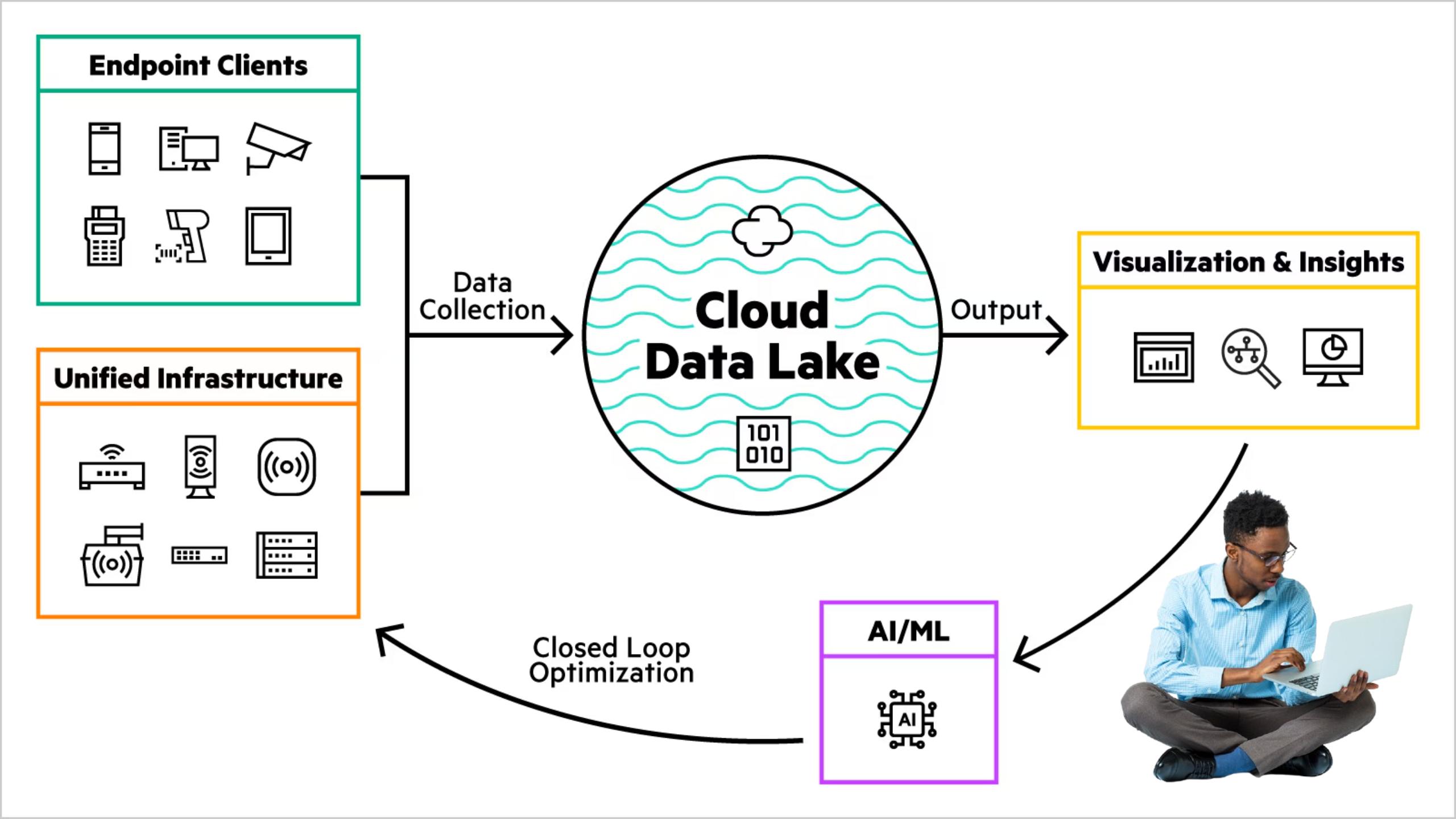In today’s technological landscape, robots are increasingly becoming an integral part of various industries, revolutionizing the way tasks are performed. Robotics, the multidisciplinary field that combines science, engineering, and technology, is responsible for creating machines capable of performing human-like actions. These machines, known as robots, are designed to replicate or enhance human capabilities, often performing repetitive tasks with greater precision, efficiency, and consistency than humans. With the integration of artificial intelligence (AI), robots are now capable of handling more complex and sophisticated tasks across diverse sectors, from healthcare to manufacturing.
This blog explores the world of robotics, delving into what robots are, how they work, their key components, and their real-world applications across different industries. Whether you’re a budding technologist, a business owner looking to adopt robotic solutions, or simply curious about the future of automation, this detailed guide will provide you with valuable insights into the rapidly advancing field of robotics.
What is Robotics?
Robotics is the interdisciplinary field of study focused on the design, construction, operation, and use of robots. At its core, robotics aims to develop machines that can perform tasks autonomously or semi-autonomously. Robots are programmed machines that can carry out specific tasks, and the field of robotics encompasses a wide variety of robots with different levels of intelligence, autonomy, and applications. The introduction of artificial intelligence (AI) into robotics has paved the way for robots to adapt to dynamic environments and handle more complex tasks that were once thought to be exclusive to human labor.
The term robot is derived from the Czech word robota, which means “forced labor” or “drudgery.” The word was first introduced in Karel Čapek’s 1920 science fiction play R.U.R. (Rossum’s Universal Robots), where robots were mass-produced beings designed to perform repetitive labor, without the ability to think creatively.
What Is a Robot?
A robot is a programmable machine designed to carry out specific tasks autonomously or under human control. Robots can vary widely in form, size, and function. Some robots are designed to replicate human actions, while others are built for specific tasks in industrial, medical, or research settings. While all robots are machines, not all machines are robots—robots must have some degree of autonomy and the ability to carry out tasks based on input or environmental feedback.
Robots can operate across a spectrum of autonomy levels, from being human-controlled or remotely operated (teleoperated robots) to fully autonomous systems that perform tasks without any external control.
Key Components of a Robot
Understanding how robots work requires knowledge of the various components that make up a robot’s physical and computational structure. A robot typically consists of the following key components:
1. Control System (Brain)
The control system is the heart of the robot, often likened to a human brain. This component processes data, makes decisions, and sends commands to other robot components. The control system is programmed with algorithms to guide the robot’s behavior and manage tasks, such as following a line, performing a dance move, or assembling products on an assembly line.
2. Sensors
Sensors are the “senses” of a robot, allowing it to perceive its environment. These components collect data from the outside world and convert it into electrical signals. Common sensors found in robots include:
- Cameras that act as “eyes,” allowing the robot to see and interpret visual data.
- Microphones that function as “ears,” enabling the robot to hear sounds.
- Pressure sensors that help the robot sense its physical environment and detect objects or changes in its surroundings.
These sensors provide critical feedback to the control system, which interprets the data and makes decisions accordingly.
3. Actuators
Actuators are the components responsible for the robot’s movement. These are typically motors or hydraulic systems that convert electrical signals from the control system into mechanical movement. Actuators make it possible for robots to carry out physical tasks, such as moving an arm, walking, or even lifting objects.
4. Power Supply
A robot, like any other machine, requires power to function. Power is typically supplied through batteries or external electrical connections. For stationary robots, such as those used in industrial environments, a constant power source from an AC outlet may be used. For mobile robots, internal batteries (often lead-acid or lithium-ion) are employed to ensure autonomy.
5. End Effectors
End effectors are the parts of a robot that interact directly with the environment. These could be tools or manipulators such as robotic grippers, hands, or specialized devices like welders or spray nozzles, depending on the robot’s intended task. End effectors are crucial for robots that perform tasks like assembling products, surgical procedures, or even delivering packages.
How Do Robots Work?
Robots can operate in different ways, depending on their design and purpose. Some robots are pre-programmed with specific tasks and operate in controlled environments, performing repetitive actions—such as robots on an automotive assembly line. These robots are designed to perform one or a few tasks with great precision and speed.
Other robots are more advanced and are capable of operating autonomously. These robots use sensors to perceive their surroundings and process the information in real-time to make decisions. For example, a robot in a warehouse can navigate obstacles, pick up items, and deliver them to the correct location, all without human intervention.
Teleoperated robots, on the other hand, allow humans to control the robot remotely. This can be done through wireless networks, and the robot sends data back to the operator to inform decision-making. A prime example of teleoperated robots includes drones used in search and rescue missions or robots used to explore hazardous environments, like underwater pipelines.
Types of Robotics
Robotics encompasses a wide range of robot types, each designed for specific tasks. Here are some of the most common categories:
1. Humanoid Robots
Humanoid robots are designed to resemble humans in both appearance and behavior. They can mimic human movements such as walking, jumping, and carrying objects. Humanoid robots are often used in research, education, and entertainment. Notable examples include Sophia by Hanson Robotics and Atlas by Boston Dynamics.
2. Cobots (Collaborative Robots)
Cobots are designed to work alongside humans. Unlike traditional industrial robots that operate in isolation, cobots are equipped with sensors to safely interact with people. These robots perform tasks that are repetitive or dangerous, freeing up human workers to focus on more complex or creative tasks.
3. Industrial Robots
Industrial robots are used in manufacturing and production environments. These robots often have robotic arms and are capable of handling tasks like assembly, welding, painting, and material handling. Their precision and ability to work continuously make them invaluable in modern factories.
4. Medical Robots
Medical robots assist healthcare professionals with tasks like surgery, diagnostics, and patient care. Surgical robots, like the da Vinci Surgical System, enable doctors to perform minimally invasive procedures with greater precision. Other medical robots are used for transporting supplies, monitoring patient health, and offering companionship to patients.
5. Agricultural Robots
Agricultural robots help with tasks such as planting, harvesting, and monitoring crops. Autonomous tractors and drones are commonly used to collect data on crop health and soil conditions, while robots like Octinion’s Rubion are designed to pick fruits and vegetables.
6. Microrobots
Microrobots are tiny robots designed for tasks that require miniature scale. These robots can be used for medical applications, such as targeted drug delivery or performing procedures inside the human body. They are often used in biotechnology and research settings.
7. Augmenting Robots
Augmenting robots, such as exoskeletons, enhance or replace human capabilities. These robots are used in rehabilitation, helping people with physical disabilities regain movement. They can also be used to augment strength, allowing workers to lift heavy objects or perform tasks that require great force.
8. Software Bots
Software bots, also known as “bots,” are programs that automate specific tasks. Examples include chatbots that assist with customer service or virtual assistants like Siri and Alexa. While these bots aren’t physical robots, they are often used to automate tasks that would otherwise require human intervention.
Robotics Applications Across Industries
Robotics has transformed numerous industries, increasing efficiency, safety, and capabilities. Here are some of the key sectors where robotics plays a crucial role:
1. Manufacturing
Robots have long been used in manufacturing environments for tasks like assembly, packaging, welding, and material handling. Their ability to work continuously with high precision has revolutionized production lines.
2. Healthcare
Medical robots assist in surgeries, patient care, and diagnostics. For example, robotic surgery systems allow surgeons to perform highly precise operations with minimal invasiveness, reducing recovery times for patients.
3. Companionship
Robots are increasingly being used to provide companionship and support, particularly for elderly people or those with disabilities. Robots like PARO, a robotic seal used in therapy, help people with dementia or mental health conditions.
4. Home Use
Domestic robots, like vacuum cleaners (Roomba), lawn mowers, and personal assistants, are making everyday life more convenient. These robots automate household chores and tasks, freeing up time for humans to focus on other activities.
5. Search and Rescue
Robots are invaluable in search and rescue operations, where they can work in hazardous environments. Robots can access areas that are too dangerous for humans, such as collapsed buildings or burning structures, and help locate survivors or deliver supplies.
Conclusion
Robotics is transforming the way we live and work, providing solutions to problems that were once insurmountable. From enhancing industrial productivity to offering companionship and revolutionizing healthcare, robots are playing an increasingly important role across many sectors. As AI continues to evolve, robots will become even more sophisticated, handling increasingly complex tasks and making our world more efficient, safer, and innovative.























